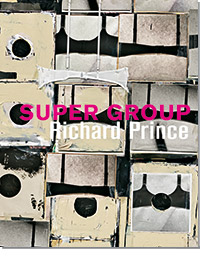Künstlerbücher / Special Editions
Almond, Darren / Blechen, Carl: Landschaften
Brown, Glenn: And Thus We Existed
Butzer, André: Exhibitions Galerie Max Hetzler 2003–2022
Chinese Painting from No Name to Abstraction: Collection Ralf Laier
Choi, Cody: Mr. Hard Mix Master. Noblesse Hybridige
Demester, Jérémy: Fire Walk With Me
Dienst, Rolf-Gunter: Frühe Bilder und Gouachen
Dupuy-Spencer, Celeste: Fire But the Clouds Never Hung So Low Before
Ecker, Bogomir: Man ist nie Alone
Elmgreen and Dragset: After Dark
Förg, Günther: Forty Drawings 1993
Förg, Günther: Werke in der Sammlung Friedrichs
Galerie Max Hetzler: Remember Everything
Galerie Max Hetzler: 1994–2003
Gréaud, Loris: Ladi Rogeurs Sir Loudrage Glorius Read
Grosse, Katharina: Spectrum without Traces
Hatoum, Mona (Kunstmuseum
St. Gallen)
Eric Hattan Works. Werke Œuvres 1979–2015
Hattan, Eric: Niemand ist mehr da
Herrera, Arturo: Boy and Dwarf
Hilliard, John: Accident and Design
Horn, Rebecca / Hayden Chisholm: Music for Rebecca Horn's installations
Huang Rui: Actual Space, Virtual Space
Kowski, Uwe: Gemälde und Aquarelle
Mikhailov, Boris: Temptation of Life
Mosebach, Martin / Rebecca Horn: Das Lamm
Neto, Ernesto: From Sebastian to Olivia
Oehlen, Albert: Spiegelbilder. Mirror Paintings 1982–1990
Oehlen, Albert: unverständliche braune Bilder
Oehlen, Pendleton, Pope.L, Sillman
Oehlen, Albert | Schnabel, Julian
Phillips, Richard: Early Works on Paper
Riley, Bridget: Gemälde und andere Arbeiten 1983–2010
Riley, Bridget: Die Streifenbilder 1961–2012
Riley, Bridget: Paintings 1984–2020
True Stories: A Show Related to an Era – The Eighties
Wang, Jiajia: Elegant, Circular, Timeless
Wool, Christopher: Westtexaspsychosculpture
Zhang Wei / Wang Luyan: Ein Gespräch mit Jia Wei
 |
|
|||
Richard Prince: Super Group Englisch Hardcover
|
Richard Prince wird meist unter dem Aspekt der Appropriation Art diskutiert – von Marlboro-Cowboys in den 1980ern bis zu Instagram-Porträts heute – und doch steht im Zentrum seiner künstlerischen Praxis das eigene Werk als Maler: erst Gemälde von Witzen und Cartoons, dann Krankenschwestern und Cowboys von Groschenroman-Covern, bis zu freien Varianten über Picasso und de Kooning. Für seine neue Serie Super Group benützt Prince ebenfalls Gegenstände, die ihre eigene Bedeutung mitbringen: Innenhüllen von Vinyl-Schallplatten, die er auf der Leinwand collagiert und dann mit Bandnamen, abstrakten Farbflächen und fröhlichen Figuren übermalt. Das Buch zeigt 51 Arbeiten, die sich Fragen der Identität widmen – schließlich definieren wir uns über die Musik, die wir hören. Zwei Texte des Künstlers erkunden die kulturellen Zusammenhänge und schildern die Freude der Entdeckung: „Vier Jahre hatte ich mit Plattenhüllen gearbeitet, aber etwas stimmte nicht, die Arbeiten waren nicht fertig. Es fehlte ihnen das Besondere. Es gab Strophe und Mittelteil, aber keinen Refrain. Super Group wurde zum Refrain. Ich kann Roy Orbison, Chuck D, Bill Evans, Patsy Cline, The Pretenders, und Lee Ranaldo auf eine Hülle machen … Die ganze Hülle wird so zum Hit.“ So wird auch der ganze Band zum Hit, der die Vision von Richard Prince mit Bildern und eigenen Texten in ein Künstlerbuch übersetzt.
SUPER GROUP … Six years ago I took a sleeve out of a vinyl album and looked at it and liked the foxing, the beige color, the yellowing, the creases, the weight of the paper, the two-sidedness of the construction and the hole. It also had inherited meaning. Instant Karma. Nothing much happened after that. I kept looking at the Richard Hell sleeve. And kept thinking about making more but the idea of turning record sleeves into fake memorabilia didn’t really excite me. In 2011 I was checking out my collection of Sonic Youth albums. I pulled out the records and removed the records from the sleeves. There were nine sleeves. I laid out the sleeves in a grid, three on top of three on top of three. Another square. I looked at it and called it Nine Sonic Youths. That excited me. The name, the title connected the abstraction and made it less abstract. It looked like art. It looked like an Agnes Martin with holes. It was creamy. Want to make art? Don’t. The next one I did was 16 Kinks. On-purpose. 16 Kinks was the first time I started calling them the Sleeve Paintings. Preferred. The Beatles were the first sleeves I painted. There were so many I used a two-part canvas and the way I stuck them to the canvas was with white and off-white acrylic paint. Things got messy. Fits and starts. There were mistakes made and I had so many sleeves to choose from, I would rip some off and put other ones in their place. I had like fifteen copies of Revolver. Using paint as glue became a happy ingredient. The right ingredient. I went to town. “Sergeant Pepper told the band to play.” I was ripping it up. Rave On. After the 87 Beatles, I worked on a small canvas and started to use 45 “single” sleeves and paid attention to sleeves that had lyrics printed on them. I also discovered you could order sleeves over the internet. The mail ordering changed the making. I was listening to Chuck Berry and wrote down his lyric “riding along in my automobile” on a sleeve. I did the same with the Def Leppard font. Looking at what I listened to. So that’s what happened …
... |